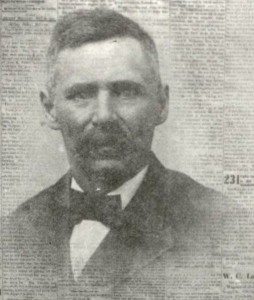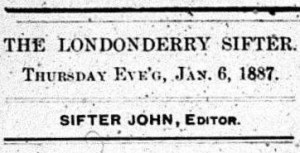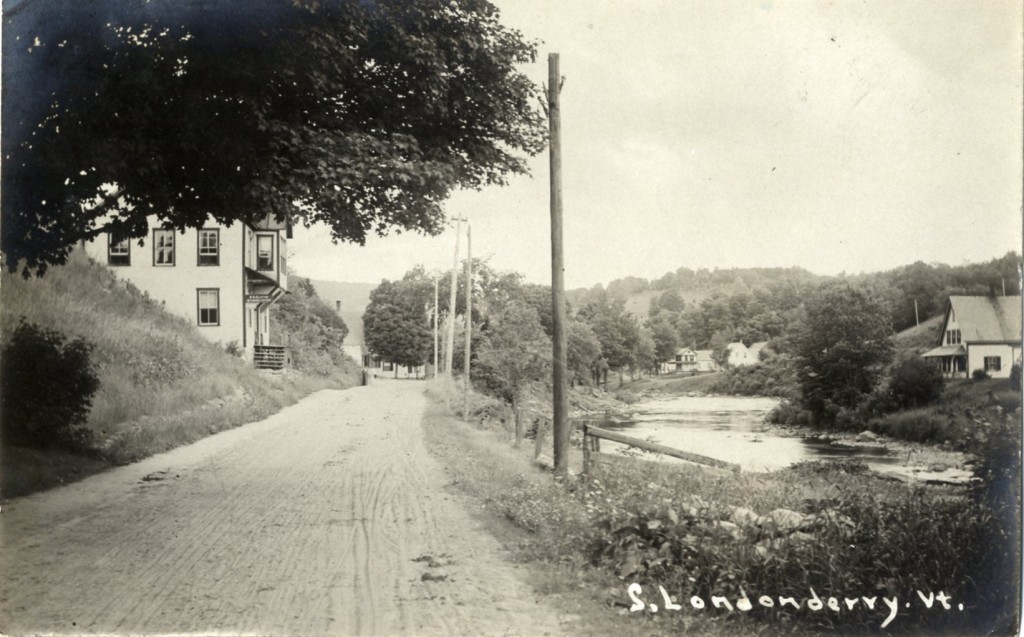One of Vermont’s most unique newspapers, the Londonderry Sifter, will be added to Chronicling America during the third phase of the Vermont Digital Newspaper Project. The story of the Sifter, a weekly paper that served southern Vermont’s West River Valley from 1883 to 1922, is primarily the story of its founder and long-time editor, George T. Shanks.

Shanks was a self-taught printer who started the paper in South Londonderry with no previous newspaper experience. Until 1890, the Sifter displayed lines from the poet John Dryden, “When yellow sands are sifted from below, the sifting billows give a golden glow,” below the title on the front page. Shanks sifted the news to present columns such as “Sifterlets—Short and Snappy” and “State News—Through the Sifter’s Sieve.” He admonished local
correspondents to “sift it” and present only “the pure gold, sharp and to the point.” Shanks was known as Sifter John, even on the paper’s masthead.
 On the one hand, the Sifter was a typical country weekly. But Shanks used the paper to wage war on wrong-doers, especially those in
On the one hand, the Sifter was a typical country weekly. But Shanks used the paper to wage war on wrong-doers, especially those in
public office, and “scalp them at every opportunity.” He attacked the prominent politicians and businessmen involved in what he called Vermont’s railroad monopoly ring, protested the patronage
appointments of incompetent postmasters, and did battle with the Windham County Reformer’s equally outspoken editor, Charles H. Davenport. Sifter John’s intemperate pieces had unfortunate
consequences. He lost the building he rented and the sheriff
confiscated his press, he was sued for libel and held in jail, and his enemies started a rival paper, the West River News.
Through all the controversies, local readers supported Sifter John’s paper. When the newspaper war started in 1887, subscribers and advertisers stayed loyal to the Sifter. The Burlington Clipper reported that the West River News “died of starvation” within the year. At the end of 1887, Shanks sold the Sifter to his son, Henry M. Shanks, but continued as the editor. In 1890, they adopted a new slogan that boldly proclaimed, “Independent, Bright, Newsy and Saucy—
Opposed to All Rings, Cliques, and Factions.” In 1900, George Shanks became the paper’s sole owner and constructed a new
building to house his printing and newspaper business. When he
retired in 1904, the Sifter had 1,400 subscribers, a remarkable
number for a small, rural area.

The Sifter passed to Osro R. Clayton, who served as publisher and editor until 1915, when George C. Dixon purchased the paper. Dixon expanded the Sifter to eight pages and modernized the layout and content, but he was unable to make the paper profitable. In February 1918, he gave up the Sifter to focus on the Wilmington, Vermont Times.
Five weeks later, Henry E. Mundell, an experienced printer and newspaperman, became the Sifter’s last publisher and editor.
Looking back to the paper’s glory days, before the “incompetency and mismanagement” of Shanks’s successors, Mundell scaled the paper back to four pages and focused on local content. Mundell died
unexpectedly in 1922, and the Londonderry Sifter died with him.
Contributed by Prudence Doherty, Public Services Librarian,
UVM Special Collections
